Accreditation for Microbiological Laboratories (2023)
- Details
-
Last Updated: Thursday, 18 December 2025 23:36
Contents
This Eurachem Guide has been produced by an ad hoc Eurachem Working Group. This third edition of Accreditation for Microbiological Laboratories is a revision of the second edition published in 2013. The first edition from 2002 was produced by a joint EA/Eurachem Working Group.
The aim of this guide is to provide microbiological laboratories with guidance on how to fulfil the requirements of ISO/IEC 17025. The content, however, should also be of use to organisations seeking accreditation or certification against the requirements of standards such as ISO 15189, GLP (Good Laboratory Practice), GMP (Good Manufacturing Practice), and GCP (Good Clinical Practice)). Specific national regulations may override the guidance given in this document. The Guide will also provide useful information for laboratories that wish to establish a quality management system but are not seeking formal recognition.
The principal changes in the third edition are:
- update on recent trends in microbiology, e.g. PCR (polymerase chain reaction) techniques for the detection of microorganisms;
- addition of a list of abbreviations and symbols;
- addition of a section on risk-based thinking;
- updated sections on method verification and validation to reflect current ISO standards;
- references to the use of a decision rule;
- updated Annex A on terminology relevant to microbiology;
- new Annex C on reporting confidence intervals;
- new Annex D on estimation of uncertainty from sampling;
- the order of sections in adherence with ISO/IEC 17025:2017.
Availability
This third edition is currently available in English and can be downloaded at no cost from the link below:
Download the guide in English [pdf, 272 kB] (2023-05-23)+
+ Date of publication on this site
Translations
Translation into other languages is permitted for members of Eurachem. Other offers of translation should be directed to the Eurachem Secretariat for permission. The Eurachem policy on maintenance and development of Eurachem guidance, available on the Policies page, gives further information on translation.
Citation
This guidance should be cited* as:
“B Magnusson and K C Tsimillis (eds.) Accreditation for Microbiological Laboratories (3rd ed. 2023). ISBN 978-91-519-6581-9. Available from www.eurachem.org.”
*Subject to journal requirements
Previous versions
The second edition of this Guide can be found in the publication archive on this website.
Terminology in Analytical Measurement: Introduction to VIM 3
- Details
-
Last Updated: Thursday, 18 December 2025 23:36
Contents
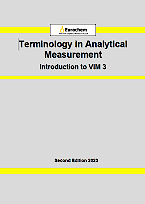 This guide has been produced by members of the Eurachem Education and Training Working Group and others co-opted to the Project group for this task.
This guide has been produced by members of the Eurachem Education and Training Working Group and others co-opted to the Project group for this task.
In the world of metrology – the science of measurement and its application – there is a language which has to be learned. The International Vocabulary of Metrology (VIM) was produced to provide a common language, primarily for physical measurements. The VIM 3 is a consistent set of concepts each described by a unique term, the ‘label’ of the concept. VIM 3 is applicable across all scientific disciplines thus making it relevant to those involved in performing measurements in chemistry and biology. Consistent definitions of concepts with their associated terms and symbols are essential if analysts and customers across the globe are to understand each other.
This Eurachem Guide discusses a selection of the concepts in VIM 3, focusing on those most likely to be encountered in analytical laboratories. It aims to cover chemical, biological and clinical measurements and gives examples over and above those in the notes accompanying the definitions in VIM 3. The guide is intended for laboratory staff, accreditation bodies, for those commissioning measurements and for those using measurement results. Lecturers and trainers may also find this guide useful when teaching aspects of metrology.
In this second edition the scope and structure, and the terms and concepts discussed, remain unchanged from the first edition. However, all sections have been reviewed and, where necessary, the text has been revised to improve clarity and ensure consistency with current international guidance at the time of publication.
Availability
This second edition is currently available in English and Czech and can be downloaded at no cost from the links below:
+ Date of publication on this site
Citation
This publication should be cited* as:
V. J. Barwick (Ed.), Eurachem Guide:Terminology in Analytical Measurement – Introduction to VIM 3 (2nd ed.
2023). ISBN 978-0-948926-40-2. Available from www.eurachem.org
*Subject to journal requirements.
Translations
Translation into other languages is permitted for members of Eurachem. Other offers of translation should be directed to the Eurachem Secretariat for permission. The Eurachem policy on maintenance and development of Eurachem guidance, available on the Policies page, gives further information on translation.
Previous editions
The First Edition in English is available, together with translations of the first edition in Farsi, German, Italian, and Ukrainian, in the publication archive on this website.
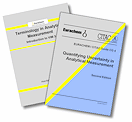




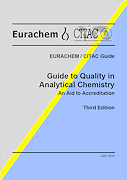 The aim of this guide is to provide laboratories with guidance on best practice for the analytical operations they carry out. The guidance covers both qualitative and quantitative analysis carried out on a routine or non-routine basis. A separate guide covers research and development work (
The aim of this guide is to provide laboratories with guidance on best practice for the analytical operations they carry out. The guidance covers both qualitative and quantitative analysis carried out on a routine or non-routine basis. A separate guide covers research and development work (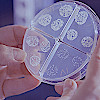
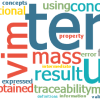
 This guide has been produced by members of the Eurachem Education and Training Working Group and others co-opted to the Project group for this task.
This guide has been produced by members of the Eurachem Education and Training Working Group and others co-opted to the Project group for this task.